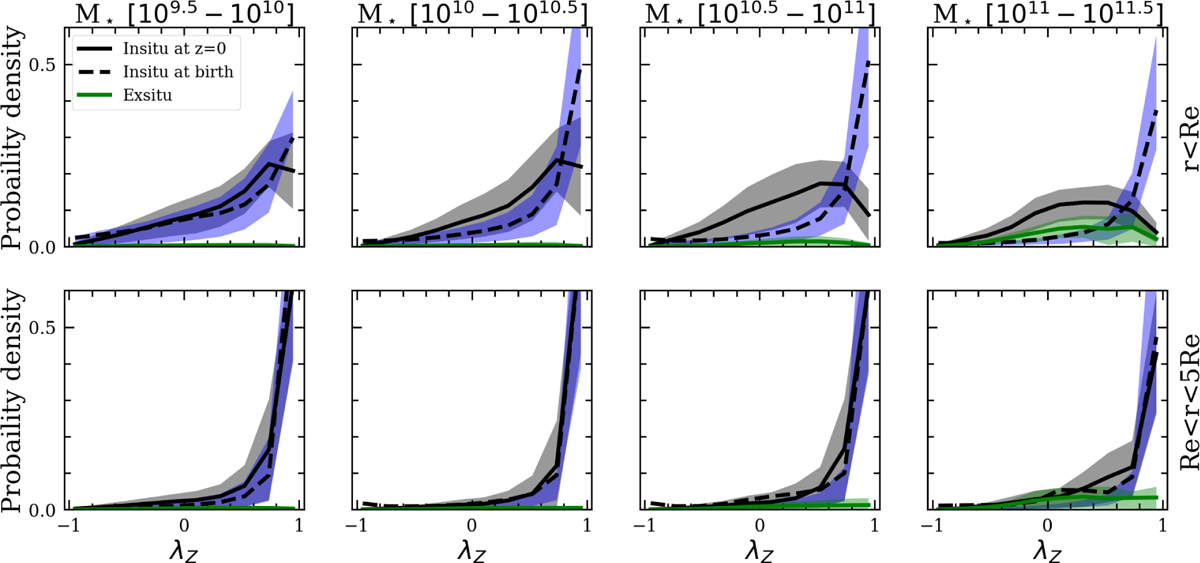Fig. 8

Download original image
Comparison of circularity distribution at z = 0 and at birth. All central galaxies in TNG50 are included. The columns from left to right represent galaxies with increasing stellar masses, and the top and bottom rows represent stellar particles in the inner Re and in the outer regions Re < r < 5Re, respectively. Within each panel, the solid black and green curve represent the present-day circularity distribution at z = 0 for in situ and ex situ stars, respectively, while the dashed black curve represents the birth circularity distribution of in situ stars. The shaded areas indicate the 1σ scatters among galaxies in each bin. Combining in situ and ex situ stars results in the overall present-day circularity distribution of stars in galaxies at z = 0. In lower-mass galaxies, the in situ stars at z = 0 maintain a circularity distribution similar to their birth conditions, with little or no significant heating across the whole galaxy. In higher-mass galaxies, the in situ stars are mostly born on cold orbits with peaking λz ~ 1. The stars in the inner Re have much lower λz at z = 0 compared to their condition at birth, indicating that significant heating occurred in the inner regions. The stars in the outer regions Re < r < 5Re have circularity distributions at z = 0 similar to those at birth.
Current usage metrics show cumulative count of Article Views (full-text article views including HTML views, PDF and ePub downloads, according to the available data) and Abstracts Views on Vision4Press platform.
Data correspond to usage on the plateform after 2015. The current usage metrics is available 48-96 hours after online publication and is updated daily on week days.
Initial download of the metrics may take a while.


